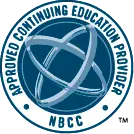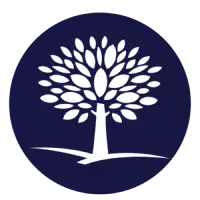Working to identify, avoid and modify your triggers will help reduce cravings and urges to restart substance use and help establish longer periods of recovery.
When setting out on the path towards recovery, people often do everything in their power to avoid relapse. Still, it’s common. Relapse can occur due to a variety of emotional, situational and physiological stressors.
Known as triggers, these stressors can encourage addiction by adding urges and cravings that make the idea of substance use more appealing. People who successfully navigate the days, weeks and months after ending substance use have found new ways to identify and navigate these triggers.
What Are Relapse Triggers?
In their simplest form, relapse triggers are anything that inspires people to start or restart substance use. Everyone is impacted by triggers, but since people are triggered by different things, not everyone will respond in the same ways to the same triggers.
Treatment Can Be Life Changing. Reach out today.

Triggers are problematic because they create a series of mental or physical responses that draw all of a person’s attention and focus toward getting and using more of a substance. Triggers produce the strong cravings and powerful urges that frequently result in relapse.
If a person can work to identify and avoid their triggers, they will have an easier time controlling and regulating their cravings and urges. Without feeling the strong compulsion to use substances, there is a much lower risk of relapse and future drug use.
Internal vs. External Relapse Triggers
Almost everything a person encounters in their daily life can be a trigger. Triggers are often categorized as internal or external.
An external trigger is a person, place or thing from the outside world that sparks feelings related to substance use. External triggers can include the people someone used drugs with, places they would get drugs and paraphernalia they would use to consume drugs. External triggers may surround a person, but they are visible and easy to acknowledge in most cases.
An internal trigger can be more challenging to identify because they are invisible and occur within the person. Possible internal triggers include strong emotions or physiological issues. These can occur as the brain and body adjust to the changing levels of alcohol or drugs in the system.
Common Relapse Triggers
Understanding and listing relapse triggers is a great way to gain better control over addiction and relapse. To streamline the process, many people separate triggers into four categories: emotional, pattern, social and withdrawal.
The emotional triggers can remind a person of how they felt before, during or after substance use. Common emotional relapse triggers include high levels of:
- Stress
- Hunger
- Anger
- Fatigue
- Anxiety
- Sadness
- Loneliness
- Boredom
- Happiness
- Excitement
Pattern triggers are activities that remind people of times when they would use substances. Some common pattern relapse triggers include:
- Talking on the phone
- Smoking cigarettes or drinking alcohol
- Watching TV
- Getting paid
- Coming home from work
- Fighting or having sex
- Going to bed
Social triggers involve the people or places linked to substance use. Some common social relapse triggers include:
- Going to bars or restaurants
- Attending parties
- Seeing a friend use drugs
- Being around others who use substances
- Celebrating an accomplishment
Substances like opioids, marijuana, alcohol and nicotine create unwanted withdrawal symptoms when use ends. Some common withdrawal relapse triggers include:
- Feeling cravings for the drug
- Thinking about the smell, taste, feel or high from the drug
- Seeing or touching drugs or drug paraphernalia
- Seeing an ad for alcohol or cigarettes
How To Deal With Relapse Triggers
Dealing with relapse triggers is important to avoid relapse and extend periods of sobriety. There are many ways for people to manage and minimize their triggers, including:
- Challenging unhealthy thoughts and replacing them with helpful ones
- Talking about feelings with friends, family and addiction professionals
- Calming the body with relaxation techniques like deep breathing, muscle relaxation and guided imagery
- Using exercise and forms of physical activity like walking, yoga, team sports and weightlifting
- Listening to relaxing music
- Focusing on replacing substance use with healthier behaviors
- Using distractions to shift thinking patterns in another direction
These strategies work well as a way to limit the unwanted influence of triggers, but they are more effective as a form of prevention. When possible, people should always work to avoid and escape the people, places, things and situations that create triggers. If a person knows that walking down a certain street will bring on cravings, stay away from that street if possible.
Relapse Prevention Planning
A relapse prevention plan is a formal way to outline relapse risks and ways to prevent future substance use. A person will normally work with an addiction professional to create the document, which includes items like:
- A person’s triggers
- The effects the triggers produce
- The frequency, intensity and duration of symptoms
- A list of strategies to reduce cravings and urges
- Available supports, such as friends and family
- Available professional supports
- An action plan in case cravings do not subside
Relapse prevention plans are great ways to detail all parts of the trigger and craving process. Even better, people can share their relapse prevention plans with friends and loved ones for extra support during challenging times.
How Rehab Helps Prepare You for Relapse Triggers
Professional rehab helps people confront all parts of substance use and addiction. During a stay in rehab, providers can help prepare you for relapse triggers by:
- Providing information on substance use and addiction
- Helping identify your triggers
- Assessing the role of mental health issues in your substance use
- Teaching healthy coping skills, relaxation strategies and communication styles to improve recovery
- Prescribing medications to help limit the impact of cravings and withdrawal triggers
- Offering family therapy to help improve relationships with loved ones
- Encouraging physically healthy behaviors like good sleep, balanced diets and exercise to strengthen the body
The safety and security of rehab helps give people the tools and skills they need to become successful after treatment ends. Of course, the world outside of rehab presents many challenges, but rehab can emphasize the notion that recovery is a long-term process full of temporary setbacks.
When It’s Time to Find Help For Addiction
If more of your time, energy and resources are being consumed by alcohol and other drugs, or if you have been experiencing problems at home, work or school due to substances, it’s time to find help. The Recovery Village at Baptist Health is here to provide a full range of addiction services aimed at establishing long periods of recovery. Contact us today to learn about programs that can work well for your situation.











